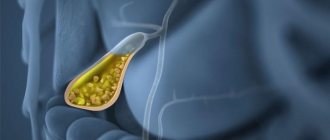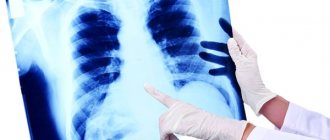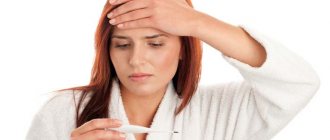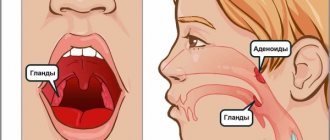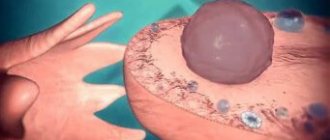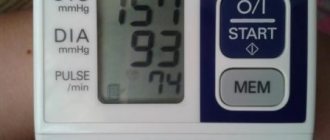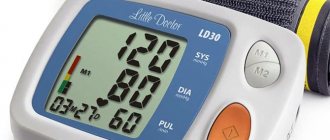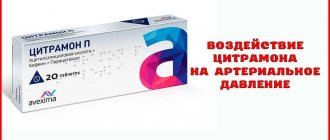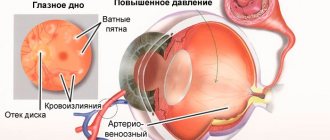Hypotension is less common than hypertension, but causes no less problems. Low blood pressure is not life-threatening, but it significantly reduces its quality. Often a person feels unwell, but does not suspect that the reason lies in hypotension. We'll tell you how to understand that you have low blood pressure and what to do in such cases.
Photo: pixabay.com
What indicators are considered low?
If a person at rest has a blood pressure level below 120/80 mmHg, this indicates low blood pressure or arterial hypotension. Recently, doctors have observed this problem not only among older people.
The cause of hypotension can be a physiological process or dysfunction of internal organs.
What causes low blood pressure during pregnancy?
Pregnant women experience frequent dizziness and weakness during pregnancy, often these manifestations occur from the very first weeks. The reasons for low blood pressure may be:
- a sharp increase in the concentration of progesterone in the blood;
- anemia due to increased need for iron;
- compression of the inferior vena cava by the uterus, especially with polyhydramnios or multiple pregnancies.
Compression of the inferior vena cava by the uterus during pregnancy
Hypotension is more often diagnosed in women with a sedentary lifestyle, insufficient intake of proteins and vitamins, and drinking water during pregnancy.
Causes
Before starting treatment, it is necessary to undergo a full examination and visit not only a therapist, but also specialized specialists. Here are a few examples of body conditions and diseases that can provoke arterial hypotension:
- cardiac dysfunction - bradycardia, heart failure, tachycardia, valve prolapse, arrhythmia, myocarditis, cardiomyopathy, heart attack;
- disorders of the endocrine system - hypothyroidism, hypoglycemia, diabetes, adrenal insufficiency;
- allergic reactions - hives, itching, swelling of the larynx, breathing problems;
- disturbances of nervous regulation - nervous shock, psychosis, staying in a stuffy room;
- disorders of blood redistribution - poisoning, excessive alcohol consumption, drug overdose;
- dehydration of the body - with increased physical activity, frequent diarrhea, or with excessive use of diuretics;
- blood loss - reduces the volume of circulating blood, which causes a decrease in pressure, a decrease in vascular tone;
- diets - a lack of vitamin B12 and folic acid in the body leads to anemia and, as a result, leads to a decrease in blood pressure.
Also, one of the reasons for low blood pressure may be heredity and transmitted from parents to children.
When listing the causes of hypotension, one cannot remain silent about pregnancy. The circulatory system of a woman carrying a fetus increases its volume, which is restored after childbirth. Consequently, low blood pressure in pregnant women is a temporary phenomenon that returns to normal on its own.
A nursing mother may also experience symptoms of hypotension due to emotional stress and overload. In this case, you need to contact a specialist who will help stabilize your blood pressure by providing assistance in creating the right regimen and diet.
Causes of low blood pressure in healthy people
Physiological hypotension can be constitutional, that is, an individual characteristic of the body. The following factors can lead to low blood pressure:
- climatic conditions – high humidity and temperature, high mountains;
- occupational hazardous conditions (hot workshops, bakeries, working in waterproof suits);
- physical activity – professional sports or high-intensity physical labor.
Signs and symptoms
With hypotension, the brain and heart do not receive the required amount of oxygen, which leads to the appearance of characteristic symptoms that patients often complain about:
- cold sweat;
- lack of air;
- panic fear of death;
- headache and severe dizziness;
- nausea and vomiting;
- noise in ears;
- impaired coordination of movements;
- general weakness;
- cardiopalmus;
- rare or frequent pulse;
- unnaturally pale skin color.
The manifestation of any sign of hypotension can be life-threatening. Therefore, you should not delay visiting a doctor for a long time - you need to undergo a full examination and eliminate the cause.
Symptoms of Low Blood Pressure
If hypotension lasts a long time, the body usually adapts to it, and there may be no clinical manifestations.
This especially applies to physiological lowering of pressure. Low blood pressure due to diseases of the endocrine or nervous system usually occurs with the following symptoms:
- fatigue and general weakness;
- mood swings;
- indifference to the environment;
- weakening of memory and concentration;
- chilliness and sweating of the extremities;
- rapid pulse;
- decreased libido;
- impotence in men, dysmenorrhea in women.
In more severe cases, and most often against the background of shock, collapse, pulmonary embolism or traumatic brain injury, attacks of dizziness, loss of consciousness, and episodes of vision loss are observed.
What to do?
Hypotension that occurs against the background of a chronic disease of an internal organ or hormonal deficiency is stabilized by the main course of therapy. If a severe form of the disease is detected, treatment should be carried out in a hospital under the supervision of specialists.
Periodic attacks of hypotension when the weather changes or a sudden change in body position are less dangerous. The main thing is to determine the cause and begin treatment in a timely manner.
An attack of a sharp drop in blood pressure can occur unexpectedly and is considered dangerous. In this case, there is no time to think, and the patient should be provided with immediate emergency care until a qualified medical team arrives.
Algorithm of actions
- it is necessary to lay the person on his back, raising his legs and slightly lowering his head;
- provide free access to fresh air;
- measure blood pressure every 10 minutes;
- if necessary, perform artificial respiration and chest compressions;
- try to write down the patient’s complaints and convey them to the doctor.
If an attack occurs in transport, you need to sit comfortably and try to lower your head below your knees. Don't be afraid or hesitate to ask passengers for help.
You should not give up physical activity - this is a vital condition.
Try to spend more time walking in the fresh air. Consult your doctor regarding your diet and daily menu. Avoid excessive consumption of drinks containing caffeine and alcohol. Try to give up bad habits as quickly as possible.
Features of treatment
A physiological decrease in pressure does not require any additional measures. It is enough to spend more time in the fresh air, get enough sleep, and stimulate the myocardium with strong tea or coffee.
Urgent measures
A sharp drop in blood pressure requires emergency measures:
- the patient is laid horizontally, his legs are raised (to prevent aspiration of possible vomit, his head is on one side);
- they call an ambulance and find out if the patient has diabetes;
- take off tight clothes, open windows;
- give a swab with ammonia to sniff;
- in the absence of diabetes, give hot, sweet, strong tea;
- rub the earlobes;
- warms the extremities.
You should not give cold water, alcohol, coffee or medications, and allow you to get up immediately after the attack has stopped. This will only make the suffering worse. You must wait until the ambulance arrives to transfer the patient from hand to hand.
Medications
Any accidental drop in blood pressure below a critical level (reading less than 80/60) can lead to death. Therefore, when prescribing medications, it is necessary to ensure that there are no contraindications to their use, that is, to clarify the concomitant pathology. If there are no restrictions, we recommend:
| Group of drugs | Individual representatives |
| Preparations with caffeine: relieve headaches, including migraine type (preparations containing caffeine are sold in pharmacies only with a doctor’s prescription; over-the-counter forms do not contain caffeine) | Algon, Acepar, Pentalgin-N, Citramon, Askofen, Pyramein, Coficil, Migrenol |
| Respiratory analeptics: stimulate the respiratory center, relieve fear, anxiety, insomnia | Cordiamine, Sodium benzoate, Camphor, Bemegride, Corazol |
| Hypertensive drugs: raise blood pressure, increase myocardial contractility | Acrinor, Angiotensinamide, Isoturon, Regulton, Remestip |
| Amino acids: strengthen the cell membrane, optimize the passage of ions and nutrients through it, improving the activity of cells in many organs and systems | Ortho-taurine, Citrulline |
| Nootropics: improve cerebral circulation and metabolic processes | Noopept, Glycine, Nootropil, Piracetam, Cinnarizine, Encephabol |
| Angioprotectors: improve blood flow, strengthen the walls of blood vessels, as side effects - relieve ringing in the ears, normalize sleep, memory | Tanakan, Detralex, Ascorutin, Phlebodia, Troxevasin |
| Vitamin complexes | Unicap, Enerion, Glutamevit, Complivit, Centrum |
All medications are taken in courses according to individual regimens drawn up by a doctor after all provoking factors have been eliminated.
Folk remedies
Comprehensive treatment of low blood pressure in men involves the use of traditional medicine produced in pharmacies and home-made. The most popular pharmacy fees are:
- herbs wormwood, chamomile, tartar, lemon balm with angelica roots, rose hips;
- a collection of wormwood, immortelle, lemongrass shoots, viburnum, aralia, valerian root;
- rose hips, hawthorn, viburnum, tansy seeds, oats, mint leaves, celandine.
Taking the preparations is possible only after consultation with a doctor, who will calculate the dosage of the drug. Otherwise, the herbs may become dangerous.
Quick helpers:
- salt (a pinch of salt or something salty with black bread);
- coffee or a cup of strong tea;
- a glass of sweet soda, a handful of mulberries or red grapes;
- pomegranate: be careful with stomach problems(!)
Prepare the following products yourself:
- Chinese lemongrass (15g) is poured with a glass of boiling water and cooked over low heat (without boiling!) for 15 minutes. Let the broth cool, drink a tablespoon three times a day;
- freshly squeezed lingonberry juice (one and a half glasses) is drunk in three doses, for a course of 10 days;
- Celery juice is taken one tablespoon three times a day;
- three pureed lemons are poured with cold water (half a liter), left in the refrigerator for 30 hours, a glass of honey is added, put in the refrigerator again for 30 hours, taken half an hour before meals, three times a day, a tablespoon;
- brew equal proportions of St. John's wort, lemongrass, tartar, ephedra, tansy with boiling water, infuse, cool, take by spoon three times a day.
- How they drink tea: rosehip, lemon balm, lemongrass.
- juices: carrot, beet, grape, mix with parsley - all freshly squeezed, course - a month.
Culinary recipes:
- dietary supplement to the basic diet from a mixture of cottage cheese, dried apricots, raisins, pomegranate;
- a mixture of white and black raisins, dried apricots, walnuts with 3 tablespoons of honey, drink by spoon before meals;
- a glass of boiled beans or beans is fried in vegetable oil along with a few cloves of garlic (cautious for patients with digestive problems) - a ready-made second course.
For hypotension in men, the following have proven effective:
- massage;
- physiotherapy;
- acupuncture;
- aromatherapy;
- balneotherapy.
Provided there is no discomfort for the patient, their lifestyle is adjusted:
- patients get used to not getting out of bed abruptly, do morning exercises, squeezing and unclenching their fingers (we wrote, we wrote, our fingers were tired - this tones the smallest capillaries);
- A hearty breakfast is required;
- normal drinking regime;
- avoid overheating and hypothermia;
- carry out anti-stress training;
- shows walks at night and a restful 8-hour sleep, giving up any bad habits.
At any age, if you have problems with blood pressure, you should consult a doctor. Early detection of pathology increases the chance of recovery several times.
Folk remedies
There are many ways to effectively cope with the disease and its symptoms at home using folk remedies that have been proven over the years. First of all, you should seek help from herbal remedies. As practice shows, they have a beneficial effect on the immune system, increasing the vitality of the entire body.
Here are a few recipes for infusions based on medicinal herbs:
First collection
Ingredients:
- peppermint and Manchurian aralia root - 30 g;
- May lily of the valley - 10 g;
- Chinese lemongrass - 15 g;
- Eleutherococcus root - 25 g.
Preparation of the infusion:
Finely chop the listed herbs and mix. Then pour 20 grams of the resulting mixture into 200 ml of boiling water. The collection should be infused for 20 minutes and taken 1/2 cup twice a day, trying to avoid taking it in the evening.
Recipe for the second collection
Ingredients:
- hawthorn fruits, woolly astragalus and ginseng root - 20 g;
- ephedra horsetail - 10 g;
- chamomile flowers - 15 gr.
Preparation of the collection:
Just like in the first recipe, you need to chop and mix the ingredients. Pour 20 grams of the mixture with boiling water and take 1/3 cup three times a day.
Third collection
- stinging nettle and hawthorn fruit 15 grams each;
- rose hips, Rhodiola rosea root and Zamanika root 20 grams each;
- St. John's wort 10 grams.
Cooking method:
Mix the ingredients and store in a glass jar. Place one tablespoon of the resulting mixture in a glass and pour boiling water over it. Let the herbal drink brew for about an hour. Take ½ glass twice a day before meals.
In addition to herbal remedies, teas are very popular in folk medicine. They are able to raise blood pressure, enrich a weakened body with microelements and vitamins, supporting the human immune system in working mode. Herbal teas are especially useful for people who have had a heart attack.
| Plant name | Impact on the body | Cooking method | How to use |
| Golden root (Rhodiola rosea) | Restores strength and increases low blood pressure | One tablespoon of crushed root is poured into a liter of boiling water and left to simmer over low heat for 15 minutes. | One glass 3 times a day |
| St. John's wort | Relieves nervous tension, has an excellent tonic effect | A tablespoon of the crushed plant is poured into a glass and poured with boiling water. The tea should be steeped for about an hour. | Take ½ cup three times a day. |
| Thistle | Tonic effect | Pour boiling water over a tablespoon of the crushed plant and let it brew. | Take ½ glass of chilled drink three times a day. |
| Immortelle | Restores strength, relieves nervous tension, has a tonic effect | Pour 10 grams of dry preparation into a glass of boiling water. | Take before meals, twice a day (morning/afternoon) |
Alcohol infusions of ginseng, Rhodiola rosea and Eleutherococcus can be purchased in pharmacies. They have a similar general strengthening effect and stabilize blood pressure.
Ways to increase pressure
Coping with physiological hypotension, although not easy, is still within the power of everyone. And for this it is not at all necessary to go to the hospital, because doctors sometimes prescribe medications without even really understanding the problem. Yes, the healthcare system leaves much to be desired, so first you should try to solve the issue yourself. So how to increase blood pressure at home?
First of all, you need to develop a special daily routine that will be aimed at eliminating physiological hypotension and normalizing vitality in general:
- Healthy sleep. Sleep at least 8-9 hours a day, and more if necessary.
- Smooth rise. Never get out of bed suddenly or quickly, otherwise you may lose consciousness. Lying in bed, you need to stretch the muscles of your neck and limbs for several minutes, stretch, and only then get up.
- Morning work-out. It is recommended to devote 15-20 minutes to light physical activity every morning, but doing active sports at least 2 times a week (football, volleyball) will lead to better results.
- Cold and hot shower. Water procedures should be accompanied by a change in temperature.
- Proper nutrition. The diet should be varied with a full range of vitamins, minerals, proteins and other components.
- Active lifestyle. It is not recommended to spend your free time on the sofa near the TV. It is better to go for a walk, get some fresh air, or do some active work, such as cleaning the house.
In addition, drinking strong tea and coffee will also do the trick, but you don’t need to drink more than 2-3 cups a day. Doctors say that these drinks increase blood pressure to a normal level, although in large quantities a person’s nervous system may be too excited, and then problems with sleep will appear.
Medicines
An improperly organized daily routine, sleep disturbances and stress can trigger surges in blood pressure. Despite the fact that hypotensive patients are less likely to seek help from a doctor, they experience no less inconvenience than people suffering from hypertension.
When experiencing general weakness, headache, or tinnitus, the patient usually turns to his local doctor. However, there are times when you cannot hesitate. What to do in such a situation? First of all, you can take a drug that stabilizes blood pressure. Here are a few medications that will help increase low blood pressure:
- Citramon;
- Gutron;
- Mezaton.
When there is a sharp drop in pressure, when minutes count, there are a number of drugs that can quickly cope with its normalization. Their use requires consultation with a doctor due to the possibility of side effects that can complicate an already difficult situation.
Self-administration of medications is undesirable and is only permissible in critical cases.
List of emergency medicines
- Cordiamine - simulates the nervous system and effectively constricts blood vessels. Available in the form of drops or solution for injection. Dispensed only with a doctor's prescription.
- Caffeine in tablets has a stimulating effect on blood vessels, the heart and stimulates the psyche. Side effect: arrhythmia.
- Ephedrine - stimulates adrenaline receptors located in blood vessels. Available in the form of drops and injections.
- Atropine - blocks m-cholinergic receptors, excellent for emergency care, but only administered by a doctor.
- Heptamil - increases cardiac output by stimulating coronary blood supply.
Consequences of low blood pressure
The danger of low blood pressure lies not only in poor health and general weakness.
The consequences of hypotension can be of the following nature:
- the heart muscle and brain lack oxygen, and functioning functions in vital organs are disrupted;
- due to lack of vascular strength, elasticity and plaque on the walls, blood circulation is impaired. Cardiogenic shock may develop, causing the heart muscle to partially lose its ability to contract;
- metabolic processes are disrupted;
- sudden loss of body weight;
- Dementia may develop in old age;
- reduction in the total volume of blood circulating in the body;
- pathological changes in the kidneys and liver;
- diseases of the nervous system.
Constantly reduced parameters pose a danger to girls throughout the entire period of pregnancy. The unborn baby may develop oxygen starvation, and various pathological abnormalities may appear after birth. This is why it is necessary to keep the measurements under control and increase the pressure if necessary.
Symptoms of ocular blood pressure
Eye pressure can arise due to various factors, but regardless of the cause, it will cause a lot of inconvenience to its “victim”. Most often, this occurs due to insufficient hydration of the eyeball, and leads to deterioration of vision.
The normal range for an adult male is 10-23 mmHg. Art. This level allows the retina to maintain optical properties, and vision does not deteriorate.
The symptoms of elevated IOP cannot be missed. First of all this:
- Visual impairment, especially during twilight.
- Reduced field of view.
- Tired eyes.
- Redness of the eyeball.
- Headaches in the area of the suprafrontal arches, eyes and temples.
- Flashing midges before the eyes.
- Unpleasant sensations in the eyes while watching TV or working at the computer.
A decrease in IOP (intraocular blood pressure) is quite rare, but still patients over 40 years of age who do not take measures in time can develop glaucoma.
Normal blood pressure: parameters
A man’s blood pressure norms, although slightly, correlate with his age
In the USSR, normal blood pressure by age (from 17 to 80 years) was calculated taking into account not only age, but also weight:
- SBP = (person's age / 2) (body weight × 0.1) 109;
- DBP = (person's age × 0.1) (body weight × 0.15) 63.
Modern cardiology has abandoned these formulas. What is the normal blood pressure for men today?
Regardless of height, weight and age, starting from the age of 17, normal blood pressure for a man or woman is:
- SBP = 90 to 129;
- DBP = 60 to 89;
- PAD = 45 ±10.
Nevertheless, in fairness, it is worth noting that some footnotes on age are still given, but only when it comes to low blood pressure.
| Age category | GARDEN | DBP | PAD |
| Blood pressure norms for boys 14-17 years old | 129 | 69 | 30-35 |
| Normal blood pressure for a 30 year old man (18-49 years old) | 120 | 80 | 35-55 |
| Normal blood pressure in an adult man over 50 | {amp}lt; 140 | {amp}lt; 90 | ≤ 50 |
Tonometers: automatic for the shoulder (1) and wrist (2), semi-automatic (3) and manual (4)
The device for measuring blood pressure is called a tonometer. Despite the fact that the price of automatic and semi-automatic devices is much higher, mechanical tonometers - a cuff with a bulb and a phonendoscope - in practice give more accurate measurement results (see photo above).
Today it is possible to measure blood pressure using modern household wrist devices, but their measurements are still far from ideal. They are good only for approximate rationing of physical activity in athletes or during exercise therapy.
Instructions for correctly measuring blood pressure at home are as follows:
- before measurement, refrain from tonic drinks (1 hour) and smoking (30 minutes);
- 15 minutes before measurement, avoid physical activity;
- take the measurement while sitting or lying down, you can also stand, but so that the cuff is at the level of the heart, including the cuff of an automatic blood pressure monitor for the wrist;
- the sleeve should not overtighten the arm, and the size of the tonometer cuff should “correspond” to the volume of the shoulder (wrist);
- do not move or talk during the procedure;
- to obtain accurate indicators, you should measure blood pressure three times, with a time interval of 3-5 minutes, and then calculate the arithmetic average values;
First aid for a sudden and sharp drop in blood pressure
In case of a sharp drop in pressure, the following first aid procedure must be followed:
- lay the person horizontally, place a pillow not under the head, but under the shins;
- unbutton your collar, open a window or vent, cover your legs and lower body with a warm blanket;
- measure your blood pressure and make sure that the reason for the sharp deterioration in health is indeed a drop in pressure;
- ask if the person suffers from diabetes;
- give hot and sweet tea, to which you can add 10-15 drops of tonic infusions, for example, rosea radiola;
- do not allow snorting ammonia and drinking alcohol, caffeine tablets, coffee, strong alcohol;
- prevent sudden movements.
Why are drops in blood pressure dangerous?
Hypotension in the vast majority of cases does not pose any serious danger to the body compared to hypertension. However, the very fact that a person is prone to a sharp decrease in blood pressure indicates that the body still has some problems and they need to be solved immediately.
Chronic hypotension suffers from constant fatigue, drowsiness, and weakness. They cannot lead an active lifestyle or engage in certain activities. An adult at any age may encounter the following problems arising from low blood pressure:
- Loss of consciousness at any time, which can lead to injury;
- Memory deterioration, all cognitive qualities of a person suffer;
- Poor coordination;
- Vision problems;
- “Bouts” of disorientation;
- Malfunctions of the heart.
Pregnant women and the elderly are especially at risk for sudden drops in blood pressure. This was already discussed earlier. Treatment of such conditions is carried out only under the supervision of a competent specialist.
Characteristic signs of decreased blood pressure
Not every person has a blood pressure monitor with them or has the opportunity to go to a medical center if they feel unwell. Chronic hypotensive people, as a rule, quickly recognize the symptoms of arterial hypotension, but people with consistently normal blood pressure readings may become confused. You should pay attention to the combination of symptoms that form the overall clinical picture of arterial hypotension:
Characteristic when blood pressure decreases. Lethargy, dizziness, weakness, apathy, etc.
- dull throbbing pain in the temples, ears or back of the head;
- decreased visual and hearing acuity;
- dizziness;
- nausea (sometimes vomiting);
- low performance (absent-mindedness, memory impairment);
- loss of strength, drowsiness;
- stabbing or scratching pain behind the sternum;
- arrhythmia;
- feeling of lack of air;
- coldness of the extremities, pale skin;
- feeling of impending fainting (fainting);
- the appearance of dark spots or flies in the field of vision.
A decrease in blood pressure causes tissue hypoxia, so the vital activity of the body slows down, which also affects the state of the central nervous system. This is why hypotensive people are often susceptible to depression, neurosis and mood swings.
Arterial hypertension
High blood pressure in men and women is called hypotension or arterial hypertension (HTN). In 90% of cases, a sustained increase in blood pressure is a manifestation of hypertension, the prevalence of which increases from 30% in the middle age category to 65% in people over 60 years of age.
A gradual and abrupt increase in pressure is fixed at high values at the moment when the depressor or antihypertensive function of the kidneys is exhausted - they stop the synthesis of substances that reduce the tone of blood vessels and blood pressure.
How does high blood pressure manifest?
The insidiousness of hypertension lies in its long asymptomatic course.
You can suspect something is wrong based on the following manifestations:
- general weakness;
- frequent headaches, discomfort and pain in the chest;
- attacks of unjustified nausea;
- Intermittent sleep due to the need to frequently visit the toilet due to increased urine production at night.
Vivid signs of high blood pressure in men appear either at the time of a sharp increase in blood pressure - a hypertensive crisis, or when the disease affects one of the target organs.
A more pronounced clinical picture is observed when lesions in target organs are identified:
- with myocardial damage, its hypertrophy and thickening of arterial walls - symptoms of coronary heart disease and heart failure;
- in case of brain damage - neurological and visual disturbances;
- in case of kidney damage - symptoms of renal failure;
- if the tone of the peripheral vessels of the lower extremities is impaired - intermittent claudication
Symptoms of high blood pressure in men during a hypertensive crisis are:
- high pulse and increased heart rate;
- dyspnea;
- redness of the skin on the face and chest;
- flashing white “midges” in the eyes;
- noises, ringing and squeaking sounds in the ears;
- dizziness, pain and “ache” in the back of the head;
- pain in the heart area;
- anxiety and fear;
- nausea, possible vomiting.
Prevention of low blood pressure
Any prevention of low blood pressure includes a measured lifestyle with a clear daily routine, timely sleep and food intake. When working, you should avoid unnecessary physical and mental overload. Normal cardiac activity is favorably influenced by positive emotions, a healthy family atmosphere and positive relationships with others. Changes in blood pressure can be avoided by regular exercise, morning exercises, and regular dousing with cold water.
Prevention recommendations
To cope with the still rare symptoms of hypotension, it is necessary to take a number of preventive measures. The main thing is to be systematic, otherwise all actions will be useless. The recommendations are quite accessible:
- Increase physical activity. Sports, walks, jogging, morning exercises help tone the body.
- Drink plenty of water daily. Water dissolves excess potassium salts, strengthens blood vessels and fills the bloodstream.
- Reduce stress and neuroses to a minimum.
- Eat right, avoid spicy and fried foods, which clog the walls of blood vessels.
- Avoid fast carbohydrates - pastries, cakes, pastries. To increase your blood pressure, you can eat dark chocolate, a little marshmallow or marmalade.
- quit smoking and alcohol.
- Sleep 8-10 hours a day.
- To tone blood vessels, practice a contrast shower.
While a person is young, high or low blood pressure does not bother him. All the symptoms seem to be reserved for older people. But the disease makes you younger, stress, the environment, and bad habits take their toll. Complaints that the child’s blood pressure has dropped are becoming more frequent, especially during physical education lessons. Taking a medicine once is not enough; it is recommended to radically reconsider your lifestyle before it is too late and changes in the blood vessels have not taken a pathological form. It is not difficult to find out your blood pressure level: regular measurements throughout the week help to establish the dynamics of indicators, and also increases the likelihood of timely treatment.
